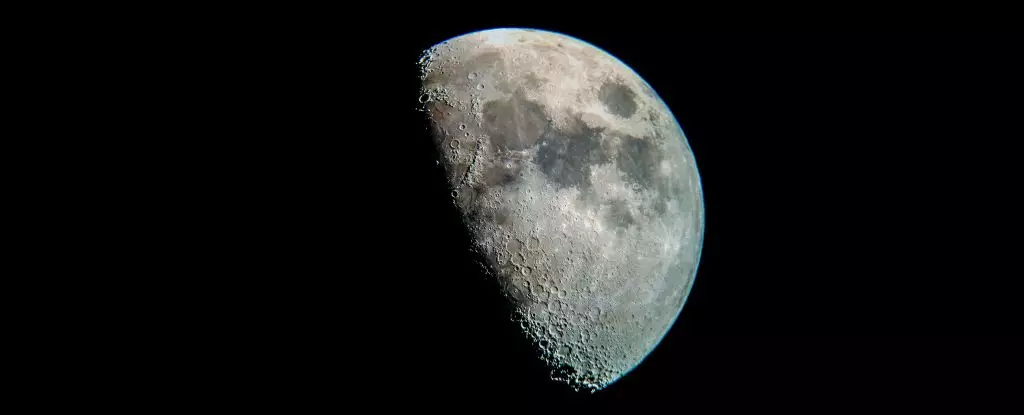Recent explorations into the Moon’s geological structure have yielded groundbreaking revelations that challenge assumptions held for centuries. Dismissed as mere folklore, the whimsical idea that the Moon could be made of “green cheese” offers a lighthearted contrast to the significant findings from a study published in May 2023. Spearheaded by a team of researchers from the French National Centre for Scientific Research, this investigation provides substantial evidence regarding the Moon’s inner core, confirming it to be a solid entity with an iron-like density. This discovery not only deepens our understanding of the Moon but also transforms the narrative about the evolution of our Solar System.
The implications of this research extend far beyond mere lunar trivia. The existence of a solid inner core can profoundly influence our comprehension of the Moon’s magnetic field evolution and, subsequently, the conditions that governed early Solar System environments. “Our results,” commented lead astronomer Arthur Briaud, “question the evolution of the Moon’s magnetic field thanks to its demonstration of the existence of the inner core.” This insight posits a paradigm shift that could enlighten future lunar studies and guide humanity’s aspirations in space exploration.
Seismic Insights
Traditionally, probing the depths of celestial bodies has remained a scientific quandary. However, utilizing seismic wave data has emerged as an effective method for mapping out planetary interiors. The Apollo missions provided valuable seismic readings, yet they lacked the resolution necessary to decisively characterize the Moon’s inner core. While the Apollo data indicated a fluid outer core, speculation continued to surround the nature of the Moon’s central region, giving rise to counteracting theories proposing both solid and fully molten cores.
To address this uncertainty, Briaud and his team meticulously fused data from numerous space missions with innovative lunar laser-ranging techniques to compile a coherent profile of the Moon’s physical characteristics. Their analysis encompassed various factors such as gravitational interactions with Earth, variations in its distance from our planet, and the Moon’s overall density. Such comprehensive modeling was critical to determining the actual state of the lunar core while providing strong backing for a more dynamic view of the Moon’s geological activity.
Dynamic Composition and Evolution
One of the most striking revelations from the study portrays a dynamic and active lunar mantle, contradicting the static and unchanging image often conjured. The researchers found that dense materials sink toward the Moon’s core while lighter materials rise, a cyclical process that sheds light on volcanic activity observed on the lunar surface. This revelation not only supports existing theories regarding volcanic behavior but also suggests a more complex system of geologic processes that could explain the diversity of materials found across different lunar regions.
The research team identified the physical structure of the lunar core as strikingly similar to that of Earth: both possess an outer fluid layer and a solid inner core. The modeling indicated that the outer core extends around 362 kilometers, while the inner core measures approximately 258 kilometers in radius. The density of the inner core, recorded at about 7,822 kilograms per cubic meter, closely mirrors that of iron, suggesting a uniformity in planetary core formation throughout the Solar System. This interconnectedness hints at shared processes and histories among celestial bodies.
Historical Context and Future Prospects
The study places significant emphasis on the evolution of the Moon’s magnetic field, known to have experienced a decline roughly 3.2 billion years ago. The team’s findings point decisively towards the lunar core’s physical characteristics playing a pivotal role in the dynamics of the magnetic field. Understanding this correlation could illuminate the behaviors of other planetary bodies with similar geophysical structures.
Such advancements in lunar science lay a robust foundation for future exploration. As humanity gears up for potential missions to the Moon, a seismic verification of these findings will serve as both an exciting challenge and a welcomed opportunity. Tapping into this newfound knowledge, exploratory missions could transition from mere reconnaissance to driven scientific inquiry as they pursue further secrets of Earth’s enigmatic satellite.
The Moon, a celestial body long dubbed a symbol of curiosity and wonder, appears to possess deeper secrets than once imagined. The revelations from this study unveil not only the structure of the Moon’s core but also echo the tales of evolution held by our entire Solar System. Armed with this invaluable information, the future of lunar exploration looks brighter than ever, empowering humanity to reach further into the cosmos.

